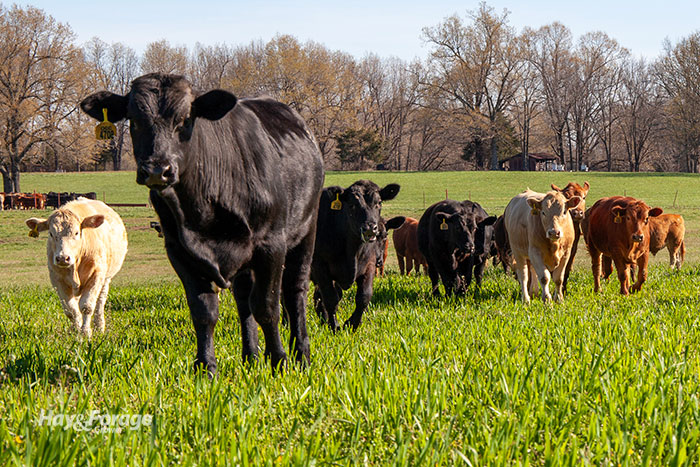
Weather always seems to play the protagonist in forage production systems, regardless of the time of year. During fall, a situation that seems to be occurring with rising frequency is dry weather during September and October. This not only limits late-season pasture production, but it also inhibits the establishment of winter annual cereals and ryegrass being used for early winter and spring grazing.
Kenny Simon, an extension specialist with the University of Arkansas, has seen this situation more than once and is often asked if it is better to wait for rain before seeding — even if it’s late — or place seeds into dust before mid-October.
“The current dry fall weather is creating serious doubt among producers of the viability of seeding winter annuals,” Simon notes in an issue of Animal Science E-News. “Based on experience, our mindset is that if dry conditions persist into mid-October, go ahead and plant anyway. Any rain that is received at that time is more effective due to cooler temperatures and lower evaporation, thereby increasing odds of good establishment.”
Simon warns that waiting until rain occurs before planting can have negative effects.
“We have seen years in which producers delayed planting until receiving rain, then suddenly a rainy pattern developed that prevented planting at all,” the forage specialist notes.
Research in Arkansas has shown that forage growth of winter rye, winter wheat, ryegrass, and winter oats planted in early October outyielded the same forages planted in mid-November. The October-planted forages produced more growth in the winter, and the spring growth was harvested four weeks sooner compared to the November planting.
Simon advises that if winter annual forages are part of a forage plan, have everything ready to plant by mid-October or just before a decent rain forecast. Don’t delay too long because bone-dry field conditions can quickly become too wet to plant.
If seeding winter annuals in mid-October, the forage specialist says it’s unlikely to realize any late-winter grazing. It may also be too late to seed winter oats, which tend to be less winterhardy. Seeding winter oats in a mixture with cereal rye or ryegrass may still be an option.
“Remember to always plan at least one season ahead and stick with the plan,” Simon concludes.

